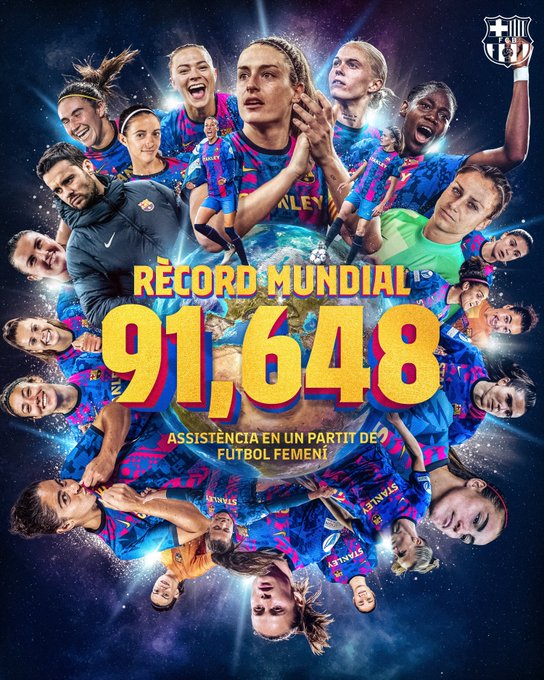FIFA is ready to leap into the women’s game with the separation of commercial rights from the men’s game.
President Infantino has revealed that they will be going ahead to seek separate commercial sponsors for the women’s world cup scheduled for Australia and New Zealand.
The unbundling means broadcast rights holders will have to pay a separate fee for acquiring rights to the world cup.
This is different from the initial agreement of selling it alongside the men’s world cup rights.
Infantino’s View On Selling FIFA Women’s World Cup Rights
“And we are trying for the first time in FIFA’s history to commercialise the Women’s World Cup on its own, not as a ‘you buy the men’s World Cup, and we give you the women’s rights on top right? So, now, what we’ve witnessed, or what we are witnessing in some countries – I don’t want to mention them, but those who are there, know it. In some countries, they are quite good at telling us – and we welcome that, I must say because it helps us as well – that we should give more emphasis on equal opportunities, on equality, on non-discrimination, on treating men and women in the same way which is, of course, what we have to do and we try to do that to the best of our ability.
Former FIFA president Josep Sepp Blatter once muted that the future of football is feminine, and the recent moves by the governing body are bringing that prophecy to life.
Infantino is bullish about the ability of women to attract eyeballs and money because of investment in their game.
“We are in the process of commercialising this Women’s World Cup. In terms of preparation, everything is well on track. Beautiful stadiums, beautiful venues. We started the ticketing sales, and great numbers as well.
FIFA President, Infantino speaking on plans for the Women’s World Cup in 2023.
“I think 200,000 tickets sold in the first week. So, it’s going well. However, there is one point which we are not very happy with, and that’s the following: We are, of course, putting a lot of effort into women’s football. We are investing in this four-year cycle of USD 1 billion in developing women’s football all over the world; it’s a lot of money.
FIFA Women’s World Cup: Broadcasters Not Putting Faith In Equality
While the move is noteworthy based on recent growth numbers from the women’s game, broadcasters are not buying into its value, leaving FIFA at a crossroads.
Now when these same broadcasters, often public broadcasters but also private broadcasters, offer us 100 times less for the Women’s World Cup than what they offer for the men’s World Cup: 100 times less, even more than 100 times on some occasions, then this is not acceptable.
“We know that the viewing figures for these broadcasters in some big footballing countries for the men’s World Cup or the Women’s World Cup are very similar, especially in the recent past we had viewing figures in the last Women’s World Cup of 1.2 billion people around the world.
“Taking only the Final 263 million, which is more than twice the Super Bowl. And having these broadcasters, who push us to do more for equality, at the same time, offering us a hundred times less for the men [compared] to the women going by the viewing figures, meaning their commercial income is very similar for men and women.
Women’s Football In Numbers
The African women’s nations cup semi-final between Nigeria and Morocco set a new record for the game in Africa.
45,562 spectators were in the stands during the encounter, a record attendance for a women’s match in Africa.
Astonishingly, the top three highest attendances in Europe in 2022 so far are for women’s games.
The Euro 2022 final joined a double-header of huge crowds recorded at Camp Nou last season when Barcelona set two records in the space of a month.
A total of 91,553 fans turned out to watch Barca face rivals Real Madrid in the quarter-finals of the Women’s Champions League.
A few weeks later, a new record was set.
On April 22, 2022, 91,648 fans watched Barca play Wolfsburg in the first leg of the semis, a game Barcelona won 5-1.
The turnout became the world record attendance for a women’s football match.
Also, at the UEFA women’s Euro, 87,192 fans inside Wembley, a UEFA tournament record.
Before that, the long-standing record attendance at a women’s football match was 90,185, which was set in 1999 during the Women’s World Cup final between the United States and China at the Rose Bowl in Pasadena, California.
What Next From FIFA
The records will motivate FIFA to push further for the women’s game to reach equilibrium.
Infantino is sure the world would have to come to terms with this new reality of growth.
“I think this is something that we seriously need to look at, and we are not going to accept these offers. This must be very clear, and hopefully, we’ll find ways to come to terms with it, but it’s important that everyone puts actions, as well, behind words and we all start to treat women’s football the same way.
